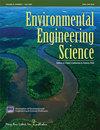印度勒克瑙某城市居住区细颗粒物污染源解析及空间代表性分析
IF 1.8
4区 环境科学与生态学
Q4 ENGINEERING, ENVIRONMENTAL
引用次数: 0
摘要
城市化带来的土地利用变化使城市居民点被人为活动所包围,从而加大了空气污染的暴露程度。关于城市景观空气污染的来源划分及其空间代表性的研究有限,本研究解决了这一问题。对勒克瑙某居民区pm2.5的特征、传播分析和来源分析进行了研究。PM2.5样本于2021-2022年冬季中期在研究区域的道路附近(即L1、L2、L3和L4)收集。采用电感耦合等离子体质谱法和离子色谱法分别对PM2.5样品进行26元素和5离子的化学形态分析。平均PM2.5白天最高为L3,夜间最低为L4,分别为166 μg/m3和76 μg/m3。arcgis -逆距离加权(IDW)模拟确定了PM2.5在整个居住区的代表性。IDW图确定PM2.5在研究区域的传播范围为200 m - 500 m。居住区内观测到的PM2.5浓度受各自昼夜时间、多源混合及其空间分布的影响差异。PM2.5的化学形态数据应用正矩阵分解5.0-as受体模型(PMF v5.0)分别对各个站点运行,并将所有四个站点的数据汇总为一个数据集,最终确定了7个因素。PMF模型的输出结果确定了PM2.5由确定的7个当地来源的平均分配,即汽车尾气- 21%,道路悬浮粉尘- 15%,烹饪燃料排放- 12%,废物燃烧- 12%,柴油发电机组尾气- 10%,二次气溶胶- 10%,建筑和拆除- 7%。其余13%对PM2.5的平均贡献来自不明来源。目前的研究结果证明了进行与城市景观模式有关的来源分配研究对减少空气污染的重要性,特别是对迅速变化的城市而言。本文章由计算机程序翻译,如有差异,请以英文原文为准。
Source Apportionment and Analysis of Spatial Representativeness of Fine Particle Pollution for an Urban Residential Area in Lucknow, India
Land use changes in the wake of urbanization have arranged the urban residential sites to be encircled by anthropogenic activities, resulting in greater exposure to air pollution. There are limited studies carried out on source apportionment of urban landscape-induced air pollution and their spatial representativeness for urban residential sites, and the present study addressed this issue. Characterization, dissemination analysis, and source apportionment of particulate matter (PM)2.5 in a residential area, Lucknow have been carried out. Samples of PM2.5 were collected during mid-winter 2021–2022 at near-road-locations (viz. L1, L2, L3, and L4) of the study area. Samples of PM2.5 chemical speciation were done by inductively coupled plasma mass spectrometry and ion chromatography for 26-elements and 5-ions, respectively. Mean PM2.5 was recorded highest at L3 in the daytime and lowest at L4 in the nighttime with the values 166 μg/m3 and 76 μg/m3 respectively. ArcGIS-inverse distance weighing (IDW) simulations identified the representativeness of PM2.5 for the entire residential site. IDW mapping identified the PM2.5 propagation up to 200 m–500 m over the study area. The diversity in the concentration of PM2.5 observed within the residential area due to the influence of the respective day and night times, multiple sources mix and their spatial distribution. Chemical speciation data of PM2.5 applied to Positive Matrix Factorization version 5.0—as receptor model (PMF v5.0) run for individual sites separately and pool all four sites' data together as a single dataset, which ultimately confirmed seven factors. The PMF model outputs ascertained the mean apportionment of PM2.5 by the determined seven local sources that is, vehicular exhaust—21%, resuspended road dust—15%, cooking fuel emission—12%, waste burning—12%, diesel generator sets exhaust—10%, secondary aerosols—10%, and Construction and Demolition—7%. The remaining 13% mean contribution to PM2.5 was evidenced by unaccounted sources. The present study outcomes qualify the significance to undertake source apportionment studies in connection with urban landscape patterns for air pollution abatement specifically for rapidly changing cities.
求助全文
通过发布文献求助,成功后即可免费获取论文全文。
去求助
来源期刊

Environmental Engineering Science
环境科学-工程:环境
CiteScore
3.90
自引率
5.60%
发文量
67
审稿时长
4.9 months
期刊介绍:
Environmental Engineering Science explores innovative solutions to problems in air, water, and land contamination and waste disposal, with coverage of climate change, environmental risk assessment and management, green technologies, sustainability, and environmental policy. Published monthly online, the Journal features applications of environmental engineering and scientific discoveries, policy issues, environmental economics, and sustainable development.
 求助内容:
求助内容: 应助结果提醒方式:
应助结果提醒方式:


